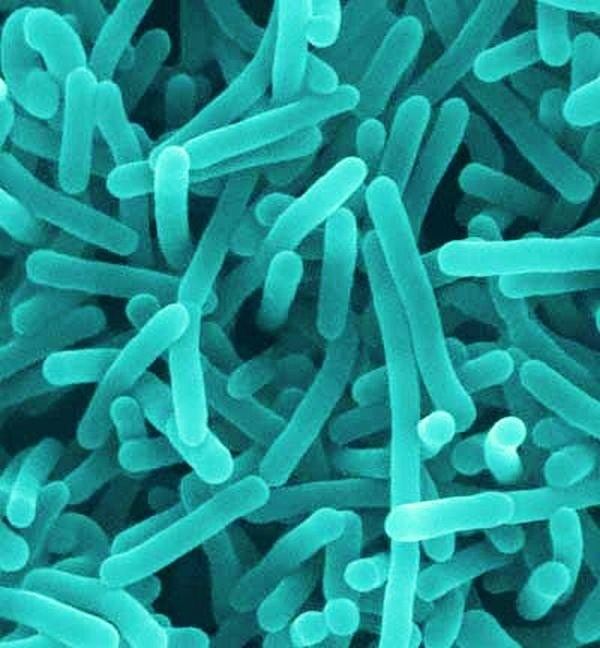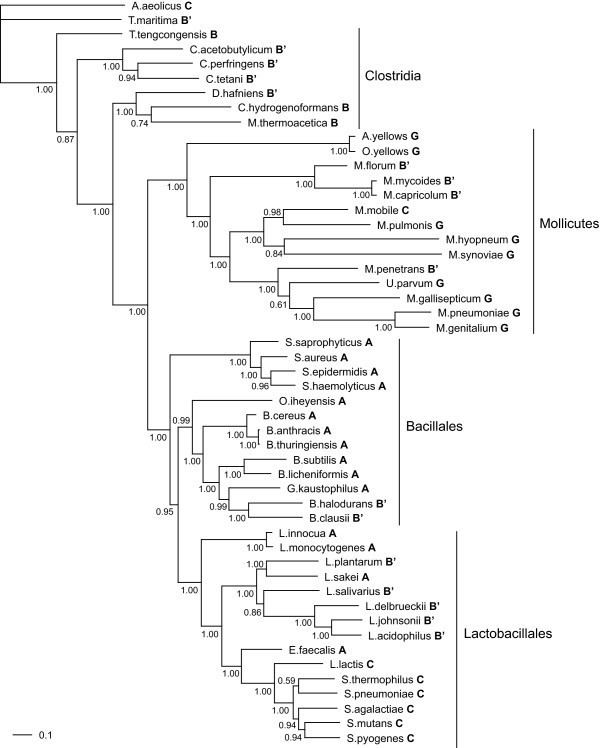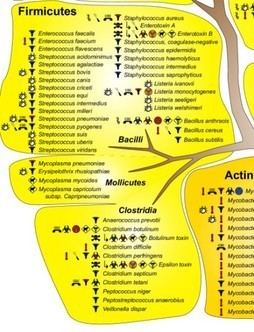Scientific name Firmicutes | ||
 | ||
Lower classifications | ||
Tipping firmicutes to bacteroidetes
The Firmicutes (Latin: firmus, strong, and cutis, skin, referring to the cell wall) are a phylum of bacteria, most of which have gram-positive cell wall structure. A few, however, such as Megasphaera, Pectinatus, Selenomonas and Zymophilus, have a porous pseudo-outer membrane that causes them to stain gram-negative. Scientists once classified the Firmicutes to include all Gram-positive bacteria, but have recently defined them to be of a core group of related forms called the low-G+C group, in contrast to the Actinobacteria. They have round cells, called cocci (singular coccus), or rod-like forms (Bacillus).
Contents
- Tipping firmicutes to bacteroidetes
- Firmicutes
- Classes
- Phylogeny
- Genera
- Health implications
- Laboratory detection
- References
Many Firmicutes produce endospores, which are resistant to desiccation and can survive extreme conditions. They are found in various environments, and the group includes some notable pathogens. Those in one family, the heliobacteria, produce energy through photosynthesis. Firmicutes play an important role in beer, wine, and cider spoilage.

Firmicutes
Classes

The group is typically divided into the Clostridia, which are anaerobic, the Bacilli, which are obligate or facultative aerobes, and the Mollicutes.

On phylogenetic trees, the first two groups show up as paraphyletic or polyphyletic, as do their main genera, Clostridium and Bacillus.
Phylogeny

The currently accepted taxonomy is based on the List of Prokaryotic names with Standing in Nomenclature (LPSN) and National Center for Biotechnology Information (NCBI) and the phylogeny is based on 16S rRNA-based LTP release 111 by The All-Species Living Tree Project

Notes:
♠ Strains found at the National Center for Biotechnology Information (NCBI) but not listed in the List of Prokaryotic names with Standing in Nomenclature LPSN
Genera
More than 274 genera were considered as of 2016 to be within the Firmicutes phylum, notable genera of Firmicutes include:
Bacilli, order Bacillales
Bacilli, order Lactobacillales
Clostridia
Erysipelotrichia
Health implications
Firmicutes make up the largest portion of the mouse and human gut microbiome. The division Firmicutes as part of the gut flora has been shown to be involved in energy resorption, and potentially related to the development of diabetes and obesity.
Presence of Christensenella, in class Clostridia and also isolated from human faeces, has been found to correlate with lower body mass index.
Laboratory detection
The presence of Firmicutes can be reliably detected with polymerase chain reaction (PCR) techniques.
